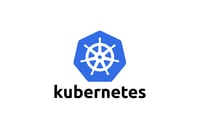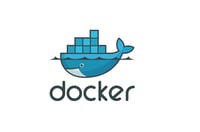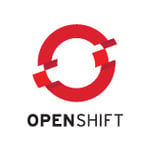When it comes to managing containerized microservices, there are basically three big dogs currently leading the pack. Each of them has their own benefits, from the ability to streamline workflows to accelerating your development and deployment processes.
Since we recommend solutions to our clients based on their unique needs, we’re basically agnostic when it comes to the technologies we recommend. Still, it’s worth breaking down the differences between the three main containerization tools.
1. Kubernetes
 In short order, Kubernetes has become a containerization and microservices powerhouse by giving developers the ability to easily run containers on different machines, auto-scale containers, manage storage, and more.
In short order, Kubernetes has become a containerization and microservices powerhouse by giving developers the ability to easily run containers on different machines, auto-scale containers, manage storage, and more.
Originally a project of Google, Kubernetes remains open source, and plays well with the other two solutions on this list. One potential drawback for enterprises, though can be the complexity of deploying and managing containers compared to the other platforms.
Here’s a short list of Kubernetes Platforms we often work with. You can also check out our Tech We Like post for deploying cloud-native tech stacks on-premises.
2. Docker

Docker excels at providing developers with a workflow that makes it easy to build and run containerized applications.
With support for any combination of clouds, OS, and languages, it is robust yet simple to use, allowing developers to build and deploy—and undeploy—applications much faster.
While Docker has rightly earned name recognition, its commercial enterprise version is still a work in progress, and although it can be easier to use than Kubernetes, large-scale organizations may not have everything they need within the Docker package.
3. OpenShift
 Red Hat’s PaaS was designed to provide enterprises with a complete package of tools they need to accelerate development in a hybrid cloud environment.
Red Hat’s PaaS was designed to provide enterprises with a complete package of tools they need to accelerate development in a hybrid cloud environment.
Built upon Kubernetes, OpenShift utilizes Docker to manage varying workloads. In addition, it has an integrated Jenkins framework for CI/CD pipelines, and supports all workload types—including Docker images.
What truly sets OpenShift apart, though, is the support from Red Hat’s team of engineers, which is available to assist any users encountering pain points or major problems.
Like we said earlier, it’s hard to go wrong with any one of these containerized microservices managers. For enterprises looking for an out-of-the-box solution, however, Red Hat OpenShift is worth checking out.
To learn more about OpenShift, download our free eBook: Build More Applications, Faster.



Get Clarity Today.
Book a Clarity Call and Get Actionable Insights For Implementation Success.
- Discover make-or-break focus areas.
- Identify process gaps.
- Uncover the best tech solutions.
Categories
- Cloud Migration and Adoption
- Enterprise IT and Infrastructure
- Artificial Intelligence and Machine Learning
- Data Management and Analytics
- DevOps and Automation
- Cybersecurity and Compliance
- Application Modernization and Optimization
- Featured
- Managed Services & Cloud Cost Optimization
- News
- Workplace Modernization
- Tech We Like
- AWS
- Social Good News
- Cost Optimization
- Hybrid Cloud Strategy
- NVIDIA
- Application Development
- GPU



